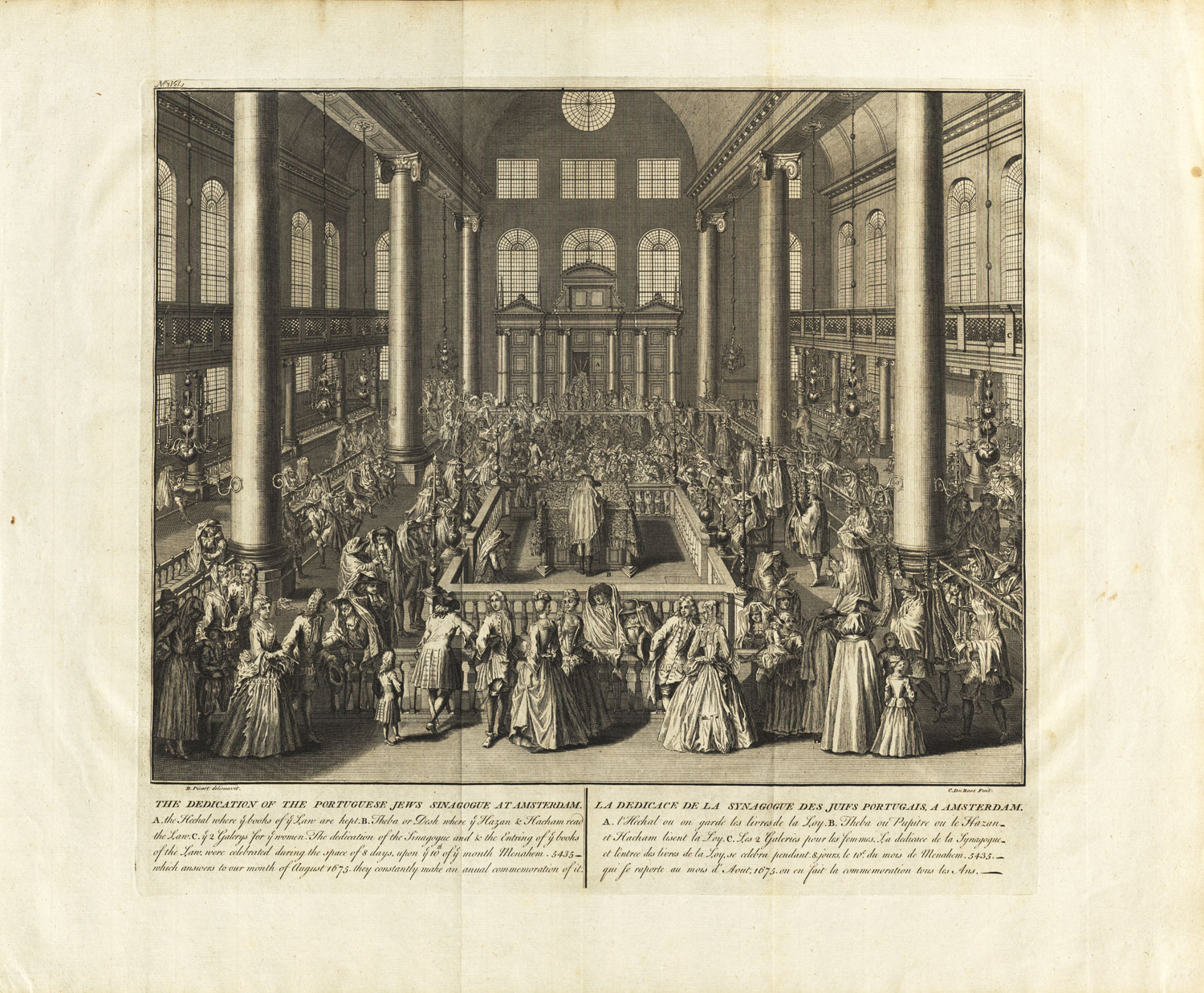The dedication of the Portuguese Synagogue in Amsterdam began with an opening ceremony on August 2, 1675, followed by eight days of celebrations. Claude Du Bosc’s (1682–1745?) engraving after that of Bernard Picart (1673–1733) is based on an earlier depiction by Romeyn de Hooghe (1645–1708). Du Bosc portrays a lively, crowded synagogue filled with men, women, and children mingling in a festive atmosphere, in contrast to a more formal and segregated religious service. The synagogue was then the largest in the world, seating over 1,200 men in the main hall and 400 women and visitors in the galleries.
The presence of men without prayer shawls mingling with worshipers suggests attendance went beyond the Jewish community, drawing non-Jews into the celebration as well. The account accompanying Picart’s original engraving in the 1731 English edition of The Religious Ceremonies and Customs of the Several Nations of the Known World… emphasizes the importance of the dedication not only as a singular event of great joy, but as a momentous occasion in the history of Amsterdam’s Jews.
The text points out that “the most considerable men amongst the Jews were there,” and the procession of the Torah into the synagogue was distinguished by “devotion and extraordinary alms.” The dedication is described as “a day to be ranked among the happiest which their nation ever saw since the destruction of Jerusalem,” describing the event as significant to the entirety of the Jewish community, even the most prominent members Jewish society.
To commemorate the dedication, in 1675, Jewish printer David de Castro Tartas compiled and published a selection “of the sermons preached on this occasion, the texts of which were chosen as they thought most suitable to the dignity of the subject.” Commemorations extended far beyond the eight-day celebration held in 1675; each year on the anniversary of the dedication, the community memorialized the event.
